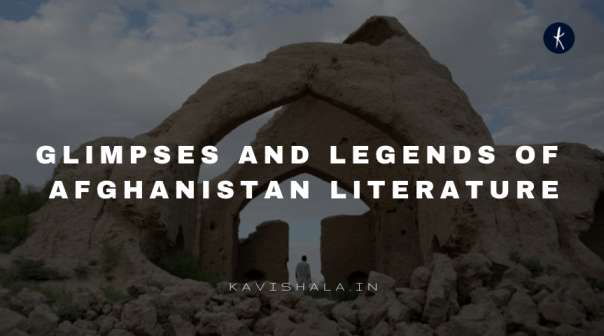
Kavishala presents the list of the top 10 most legendary Afghan Writers of all time. This list of famous Afghan Writers is sorted by HPI (Historical Popularity Index), a metric that aggregates information on a biography’s online popularity :
A famous saying from Afghan Writers that every individual should learn from :
“There is a way from heart to heart.
On earth it’s hard and heaven is far away.
Patience is bitter but its fruit is sweet.
A tree does not move unless there is wind.
Debt severs love. "
1. Rumi
With the highest HPI (Historical Popularity Index )of 86.53, Rumi is the most famous Afghan Writer. His biography has been translated into 99 different languages on Wikipedia.
He is also known as Jalāl ad-Dīn Mohammad Balkhī and more popularly simply as Rumi Being born on 30 Sept 1207 – 17th Dec 1273), was a 13th-century Persian poet, Islamic scholar, Maturidi theologian, and Sufi mystic originally from Greater Khorasan in Greater Iran. Rumi's influence transcends national borders and ethnic divisions: Iranians, Tajiks, Turks, Greeks, Pashtuns, other Central Asian Muslims, and the Muslims of the Indian subcontinent have greatly appreciated his spiritual legacy for the past seven centuries. His poems have been widely translated into many of the world's languages and transposed into various formats.
Rumi has been described as the "most popular poet" and the "best selling poet" in the United States. Rumi's works are written mostly in Persian, but occasionally he also used Turkish, Arabic, and Greek in his verse. His most prestigious Masnavi (Mathnawi), composed in Konya, is considered one of the greatest poems of the Persian language.
Famously, his works are read today in their original language across Greater Iran and the Persian-speaking world. Translations of his works are very popular, most notably in Turkey, Azerbaijan, the United States, and South Asia. His poetry has influenced not only Persian literature but also the literary traditions of the Ottoman Turkish, Chagatai, Urdu, Bengali, and Pashto languages.
2. Ali-Shir Nava'i
Ali-Shir Nava'i is the 2nd most famous Afghan Writer with an HPI of 77.61. Due to his popularity, his biography has been translated into 50 different languages.
'Ali-Shir Nava'i from 9 Feb 1441 to 3 Jan 1501, also known as Nizām-al-Din ʿAli-Shir Herawī was a Turkic poet, writer, politician, linguist, Hanafi Maturidi mystic, and painter who was the greatest representative of Chagatai literature.
Basically, Nava'i believed that Chagatai and other Turkic languages were superior to Persian for literary purposes, an uncommon view at the time, and defended this belief in his work titled Muhakamat al-Lughatayn (The Comparison of the Two Languages).
Ali-Shir Nava'i emphasized that his belief in the richness, precision, and malleability of Turkic vocabulary as opposed to Persian. Because of his distinguished Chagatai language poetry, Nava'i is considered by many throughout the Turkic-speaking world to be the founder of early Turkic literature. Still many places and institutions in Central Asia are named after him.
3. Jami
Jami is the 3rd most famous Afghan Writer with an HPI of 75.91. His biography has been translated into 57 different languages.
Nūr ad-Dīn 'Abd ar-Rahmān Jāmī ( 7 November 1414 – 9 November 1492), also known as Mawlanā Nūr al-Dīn 'Abd al-Rahmān or Abd-Al-Rahmān Nur-Al-Din Muhammad Dashti, or simply as Jami or Djāmī and in Turkey as Molla Cami, was a Persian Sunni poet who is known for his achievements as a prolific scholar and writer of mystical Sufi literature. He was primarily a prominent poet-theologian of the school of Ibn Arabi and a Khwājagānī Sũfī, recognized for his eloquence and for his analysis of the metaphysics of mercy. His most famous poetic works are Haft Awrang, Tuhfat al-Ahrar, Layla wa Majnun, Fatihat al-Shabab, Lawa'ih, Al-Durrah al-Fakhirah. Jami belonged to the Naqshbandi Sufi order.
"He who goes to the blacksmith’s shop comes home with scorched clothes. Community is not created by force.
Every man thinks his own thoughts are best.
God has said start moving so that I may start blessing.”
4. Khaled Hosseini
With an HPI of 68.26, Khaled Hosseini is the 4th most famous Afghan Writer. His biography has been translated into 62 different languages.
Khaled Hosseini was born on 4th March in the year 1965 who is an Afghan-American novelist and UNHCR goodwill ambassador. His debut novel The Kite Runner (2003) was a critical and commercial success; the book, as well as his subsequent novels, have all been at least partially set in Afghanistan and have featured an Afghan as the protagonist. Born in Kabul, Afghanistan, to a diplomat father, Hosseini spent some time living in Iran and France. When Hosseini was 15, his family applied for asylum in the United States, where he later became a naturalized citizen. Hosseini did not return to Afghanistan until 2003 when he was 38, an experience similar to that of the protagonist in The Kite Runner. In later interviews, Hosseini admitted to feeling survivor's guilt for having been able to leave the country prior to the Soviet invasion and subsequent wars. After graduating from c
No posts
No posts
No posts
No posts

Comments